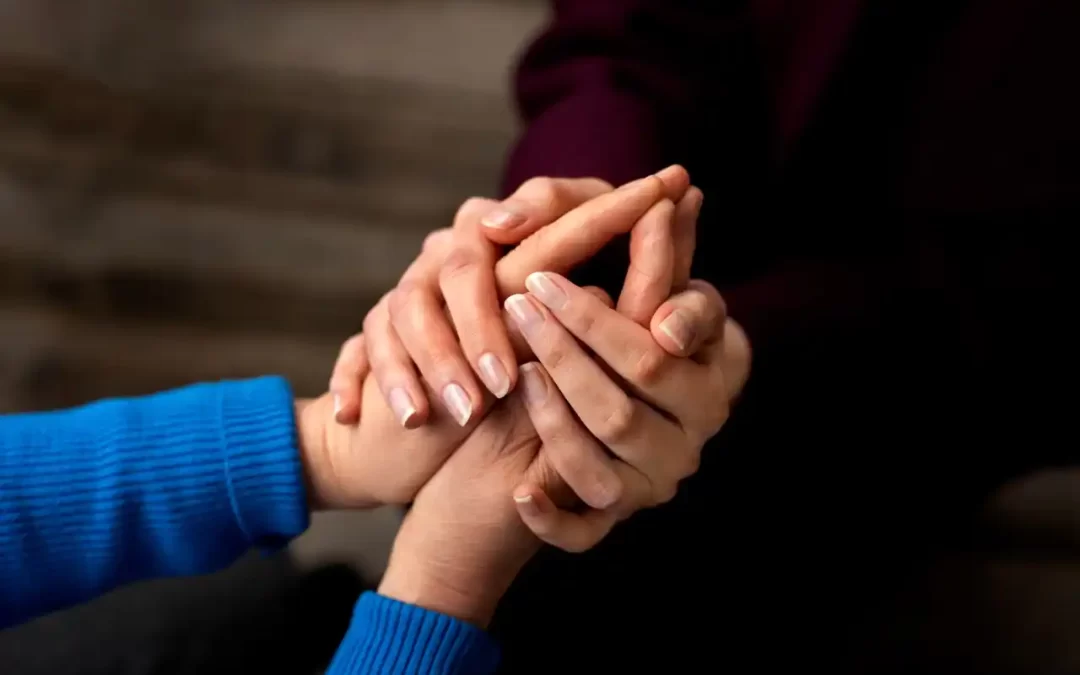Trauma responses are complex adaptive mechanisms developed during childhood as survival strategies in response to challenging or threatening environments. Recognizing and understanding these responses is crucial for fostering healing and well-being. All response types are natural if a person hasn’t learned healthy ways to cope. “The body keeps the score”, reacting not to the current event but to the unresolved past. Overcoming deep-seated traumas and responding healthily to crises is not only possible but necessary; otherwise, trauma reactions can harm not only the individual but also those around them. In this article, we’ll explore the four primary trauma responses: fight, flight, freeze, and fawn, shedding light on their manifestations and providing insights into the healing process.
Trauma Response Cycle
- An event in the present triggers an old emotional wound affecting the body and mind.
- One of the response types activates (fight, flight, freeze, or fawn), and the person reacts with yelling, dependent behavior, or dissociation.
- Surrounding people either close themselves off or blame the person for reacting too intensely, leading to a loss of connection.
- The consequences of childhood trauma, related to misunderstanding or rejection, resurface. The person feels shame, anger, and fatigue.
Such cycles reinforce a person’s belief that they are unworthy, that something is “wrong” with them, or that people always abandon them.
The key to healing lies in understanding one’s own trauma responses. Once recognized, these behaviors can be viewed as protection mechanisms, and individuals can learn alternative ways to feel safe, such as through physical activity, dietary changes, meditation, and breathing exercises.
Fight
The behavior of individuals with a “Fight” trauma response often perplexes those around them. It may seem like they rapidly change their behavior by 180 degrees and react too intensely. The fight response is characterized by an explosive and unpredictable reaction to trauma triggers. Individuals with this response may exhibit impulsive behavior, aggression, and a tendency to confront perceived threats head-on. It’s crucial to understand that they are not reacting to the present moment but to the past.
Many people who readily engage in conflict have experienced violence, humiliation, or complete disregard. Therefore, unconsciously, their main motivation becomes the desire to never experience that pain again. After a conflict, they often get entangled in a cycle of deep shame. Sometimes, to avoid this, they pretend everything is fine and expect loved ones to quickly forget about the events.
Despite her warmth and intelligence, my client Rita found herself trapped in a cycle of job terminations and failed relationships with her friends. She often felt attacked or disrespected by others, and she would lash out with sarcasm or rage. She had a hard time seeing other perspectives or finding common ground. She pushed people away and isolated herself.
Rita’s anger stemmed from her childhood. She grew up in a large and chaotic family, where she felt invisible and neglected. The only way she could get attention from her parents was by screaming and yelling. She learned to see the world as a hostile and unfair place, where she had to fight for her rights and needs.
When Rita came to me for therapy, she was unhappy and frustrated. She wanted to change, but she didn’t know how. She felt trapped by her anger and its consequences.
As her guide, I helped Rita explore the roots of her struggles. Together, we tackled her flight response, finding healthier outlets for her anger, like pausing or engaging in physical activity. We pinpointed triggers and examined her perceptions of others’ actions, fostering a more nuanced understanding.
A breakthrough moment occurred when we discussed how her anger impacted our sessions. I shared with her how I felt when she was angry or sarcastic with me, and how it made me want to withdraw. At the same time I also expressed my compassion and understanding as to why she behaved the way she did. All of these methods gradually helped Rita to overcome her anger issues. She became more aware and mindful of her thoughts and emotions, and more able and willing to regulate and communicate them. She became more open and flexible in her views and interactions, and more respectful and understanding of others.
Flight Response
In an unsafe environment, we adapt by becoming hyper-vigilant. If parents were explosive, chaotic, or emotionally distant, we grow up believing that life is unsafe, creating survival mechanisms that allow us to avoid life. People with such traumas and this type of reaction often need a dysfunctional climate to feel at home. When it comes to relationships, they usually vigilantly observe, ready to escape if needed, and as a self-defense mechanism, can seek to end relationships.
The flight response often involves a chronic sense of urgency, a constant need to be on the move, and discomfort or panic when faced with stillness. People with a flight response may find it challenging to remain in one place, often seeking distraction or overcommitting to avoid addressing underlying issues. They often experience anxiety and panic attacks and avoid being on their own.
Healing from a flight response involves cultivating a sense of safety through stillness and interpersonal connections, emphasizing present-moment awareness. Practical suggestions include dedicating a few minutes each morning to silence, meditation, or journaling. Learning to decline invitations without making alternate plans and articulating personal values and beliefs can be powerful tools. Additionally, sharing trauma reactions with a partner, and expressing needs for reassurance, contribute to healing. Physical movement serves as a crucial outlet for the energy associated with adrenaline and cortisol, promoting joy and well-being.
Freeze Response
The freeze response manifests as a state of paralysis or dissociation, where individuals mentally and emotionally detach from the current situation. This reaction is common among those who have experienced overwhelming or traumatic events.
What do I see in my clients who have a freeze response? This response often manifests as a profound sense of paralysis and a conviction of the meaninglessness of life, leading to shutdown and a tendency to withdraw from the world. The symptoms may also surface as procrastination, the inability to make even minor decisions, or seeking refuge in endless scrolling on social media or watching television. This disconnection may lead to a considerable confusion between reality and fantasy, amplifying the challenge of navigating daily life.
Healing from this response requires a reconnection with the body and the cultivation of a sense of safety in the present moment. I suggest to my clients daily practices such as mindful breathing or gentle movements. I help them to focus on the sensations inside the body without judgment or fear, allowing them to simply experience the feelings without interpretation. It is important for my clients to establish a sense of connection with themselves and with a community of like-minded people.
Fawn Response
This trauma response of being overly accommodating, is an adaptive survival mechanism learned in childhood when the surrounding environment is not entirely safe. It manifests in ignoring our own needs and focusing on the needs of others. If parents were explosive, unpredictable, or emotionally cold, a child unconsciously learns to be excessively accommodating, to fawn over people, and avoid conflicts. Many individuals with a fawn response are constantly preoccupied with what others think of them. Healing from a fawn response entails setting boundaries, prioritizing self-care, and gradually learning to assert one’s own needs.
In many of my clients The “fawn” reaction i see an overwhelming eagerness to please others, a habitual agreement with their beliefs, and a tendency to dissociate or “check out” during stressful situations. My clients allow others to make decisions that might not be helpful for them, avoiding conflict, and fearing saying “no.” Healing from this reaction involves taking small steps beyond the comfort zone to build confidence, such as setting boundaries, declining invitations without extensive explanations, documenting personal values, expressing emotions to others, and asserting one’s own point of view. Through these intentional exercises, my clients gradually begin to reclaim their sense of self and authenticity, moving towards a more empowered and assertive way of engaging with the world.
Takeaway
It is important to recognise that challenging any of coping responses does bring a lot of discomfort in the sort term. You are doing something that is very different from your typical response. So feeling anxious or guilty when you are setting boundaries or saying no is completely normal. Usually I teach my clients to sit with this discomfort short term remembering that it will be easier long term.
Understanding your own trauma response mechanism enables a better understanding of when others are reacting and putting up defenses. When interacting with people, it’s helpful to comprehend that someone reacting to trauma cannot reason logically or absorb new information, as they are trapped in their traumatic past and unable to self-soothe.









